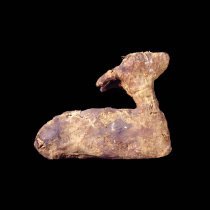Saite and Late Periods Overview
- Neolithic Period: 4500-3000 BCE
- Early Dynastic: 3000-2650 BCE
- Old Kingdom: 2650-2150 BCE
- 1st Intermediate Period: 2150-2040 BCE
- Middle Kingdom: 2040-1640 BCE
- 2nd Intermediate Period: 1640-1550 BCE
- New Kingdom: 1550-1070 BCE
- 3rd Intermediate Period: 1070-712 BCE
- Saite and Late Periods: 712-332 BCE
- Greco-Roman Period: 332 BCE-642 CE
- Coptic Period: 395-642 CE
- Islamic Period and Modern Times: 642 CE-Today
- Neolithic Period: 4500-3000 BCE
- Early Dynastic: 3000-2650 BCE
- Old Kingdom: 2650-2150 BCE
- 1st Intermediate Period: 2150-2040 BCE
- Middle Kingdom: 2040-1640 BCE
- 2nd Intermediate Period: 1640-1550 BCE
- New Kingdom: 1550-1070 BCE
- 3rd Intermediate Period: 1070-712 BCE
- Saite and Late Periods: 712-332 BCE
- Greco-Roman Period: 332 BCE-642 CE
- Coptic Period: 395-642 CE
- Islamic Period and Modern Times: 642 CE-Today
The Saite Period and Late Period
712 BCE – 322 BCE
The Assyrians (in the northeastern part of modern Iraq) invaded Egypt in 663 BCE. They drove out the Nubians and then, distracted by troubles at home, they left Egypt to its own devices. Psamtik, an Egyptian king of Libyan descent, set up the Twenty-sixth Dynasty.
Like the Nubians before them, the Saite kings emulated the traditions, art, and large private tombs of earlier times.
This revival did not last long. The Persians (from modern-day Iran) occupied Egypt (twice) until Alexander the Great arrived in 332 BCE. Egypt would be ruled by foreign powers from the time of the Persian invasions until 1952 CE, when she gained her independence from the British.
Artifacts from the Saite and Late Periods

Image: RC 1570 Gazelle Mummy at the Rosicrucian Egyptian Museum

